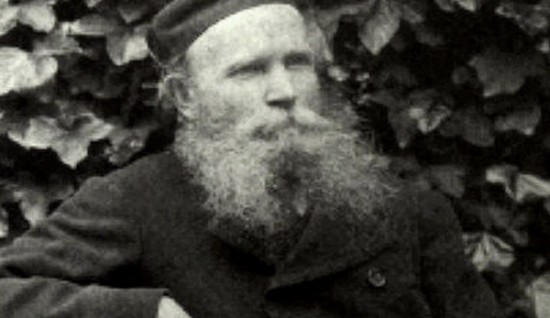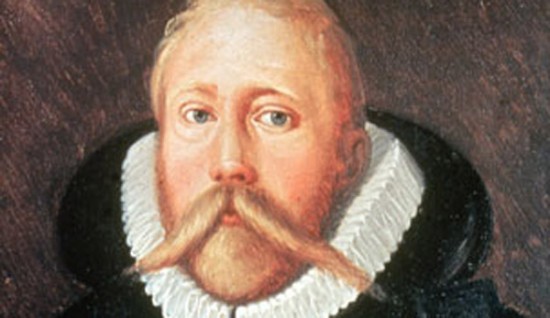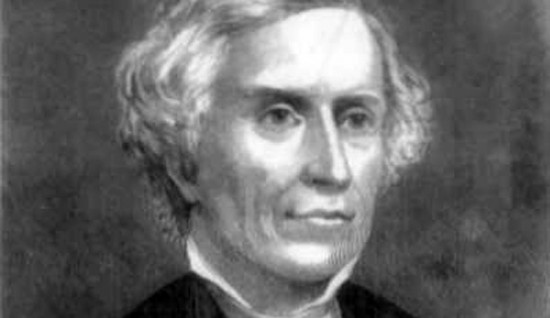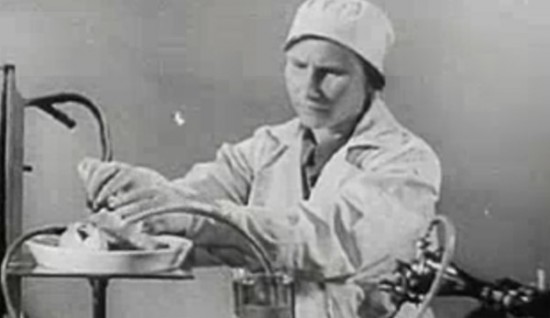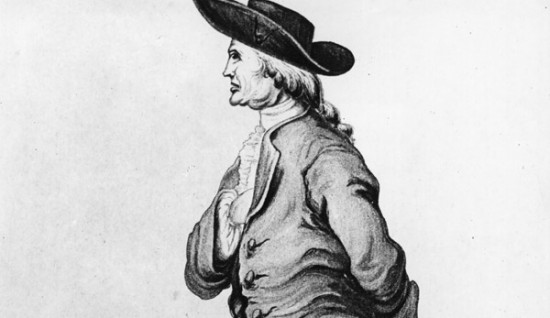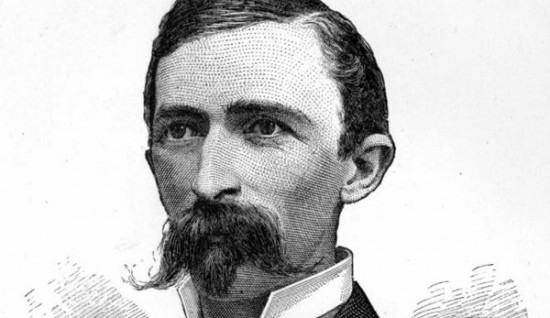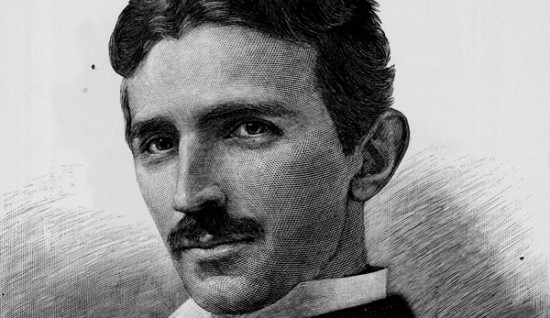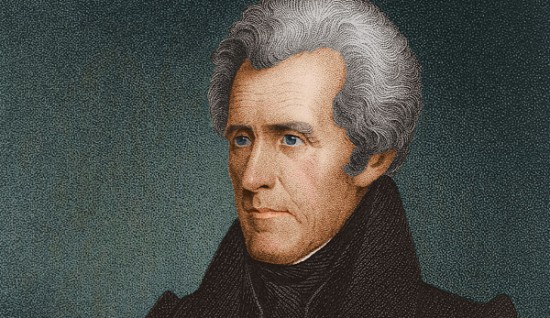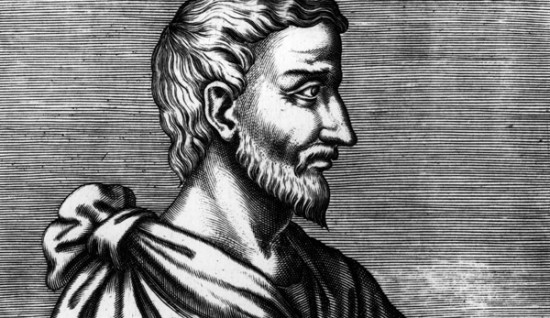10. W. C. Minor
What he did:
The Oxford English Dictionary was notable as being one of the first well-organized and well-compiled dictionaries. Indeed, it was more or less the first dictionary that didn’t suck, and which made an attempt to catalogue all the words in the English language, not just the ones that were tricky. Eventually, a few professors realized that all the dictionaries of the time were aggravatingly laid out and just generally crappy, so they set about making a better one.
One of the many problems they identified was that there weren’t any good example quotations that demonstrated how to use the word in a sentence. Unfortunately to rectify that problem, they needed someone who could compile such quotations and definitions, and match them up to every word ever written. They were to busy to do it, and they didn’t have the funding to pay anyone to do it, so they put out word that they needed volunteers for an frighteningly menial task. They didn’t get a whole lot of go-getters.
So what’s so crazy about him?
He did all of this while incarcerated in the Broadmoor Asylum for the Criminally Insane, after going nuts and killing a father of six-with-one-more-on-the-way named George Merett, who Minor thought was out to get him. During his interment he had little else to do, so he hoarded definitions and quotations the way that lady down the street hoards stray cats. Meanwhile his mental condition became continued to deteriorate until he cut his dick off with a straight razor, and they shipped him back to America.
9. Tycho Brahe
What he did:
Before Galileo, there was Tycho Brahe. Tycho Brahe catalogued the motion of every star, planet, UFO, and ball of ignited swamp gas in the heavens for much of his life, information that was surprisingly important for its time and allowed the creation of the laws of planetary motion. His carefulness and scientifically rigorous methodology are considered to have been essential for setting the stage of the scientific revolution.
So what’s so crazy about him?
Many famous geniuses were drunks, but few were as spectacularly so as Tycho Brahe. Dinner at his house would put most modern day drunken college frat parties to shame. Not only did he tend to do stupid things when he was drunk (at a Christmas party when he was 20 he got into a duel with a man in a pitch black room and lost his nose in the process), but his house was like a goddamn circus. Since Brahe at one time had a net worth of about one percent of the entire wealth Denmark and lived in a castle, the guy knew how to throw a hell of a party. Among other shenanigans, one thing he was known for was having a dwarf in his employ named Jepp who Brahe maintained was clairvoyant. Jepp’s full-time job consisted of wearing a jester’s outfit, sitting under the table at dinner, and whatever else a psychic midget is supposed to do. He also had a pet moose that would drink with the rest of them, until one day it got totally shit-faced and fell down a flight of stairs. When was the last time you were at a party and a drunk moose fell down the stairs? We thought so.
8. Samuel Morse
What he did:
He invented the first electrical telegraph, and made Morse code, the language used in communication for over a hundred years. This worked wonders in the advancement of civilization, as it provided a means of communication over long distance in short time, as well being the forerunner of modern binary code.
So what’s so crazy about him?
He was a little paranoid. He was determined that the Blacks, Jews, Catholics and the entire nation of Austria were working to destroy the White Anglo-Saxon Protestants of America. He wrote several books on the subject in which he talked about how the immigrants and lesser races were oppressing all the white people, how the Jews and Catholics were working together to kill Protestants, and how all of these groups met on a regular basis in the basement of an orphanage in Ireland. Oh, and Austria’s in there too somewhere.
Ironically, when the telegraph became widespread it allowed people to arrange in advance for their arrival when they immigrated. This led to a massive storm of immigration into the USA and filling it with people of different ethnicities, religions, and all the other things that are obviously conspiring against the poor oppressed WASPs of the country. So Morse ended up dying locked in his house afraid of going out for fear of the Catholic-Austrian-Immigrant Jews that were taking over the world.
7. Yoshiro Nakamatsu
What he did:
At 81 years old, Nakamatsu has over 3,000 patents, giving him the record for the most patents in the history of ever (Thomas Edison only had a little over a thousand, most of which he ripped off).
Chances are you encounter several of his inventions on a regular basis. He invented the CD, the DVD, the digital watch, and the taxicab meter.
So what’s so crazy about him?
Nakamatsu meticulously catalogues, records, and analyses everything he eats, in a bid to survive to the age of exactly 144. No more, no less, he is determined to die at that exact number. He sleeps only four hours a night, saying that sleeping over six hours is “very, very bad.” His diet is almost exclusively made up of his “Yummy Nutri Brain Food”, a combination of seaweed, cheese, yogurt, eel, eggs, beef, and chicken liver.
What is most interesting is his method for inventing things. He holds his breath underwater until he almost dies. He himself says “A lack of oxygen is very important… I get that flash just 0.5 sec before death. I remain under the surface until this trigger comes up and I write it down with a special waterproof Plexiglas writing pad I invented.”
6. Sergei Bryukhonenko
What he did:
Sergei Bryukhonenko made enormous leaps for medical science, and indeed mankind, when in the early 1920s he invented The Autojector, the worlds first ever life-support machine. It acted as a mechanical heart and lung, and while primitive by today’s standards it did the job pretty well. This was the template for pretty much all life support machines that came after, and we probably don’t need to tell you how important those are.
So, what’s so crazy about him?
In order to test his machine, he needed the dead and the dying, and even though this was back when medical ethics were pretty much left up to whatever the doctor’s scruples were, he couldn’t very well use people. Instead, he used dogs. Lots and lots of dogs. He would first kill them, then use his system of pumps and bowls to get them going again. As he went on, he got increasingly dramatic, practicing draining the blood from dogs’ body, then restoring it and bringing the dog back alive (however brain damaged). Later he started testing if his machine would work only on the whole dogs, or if he could get away with only part of a dog. Like, say, just the head. As it turns out, it is possible to sever a dog’s head, hook it up to a bunch of tubes, and keep it alive. Well, only for a few minutes, and in sort of a stupor, but it’s the principle that counts.
5. Henry Cavendish
What he did:
Cavendish was an instrumental figure in the scientific community. Aside from discovering hydrogen, he also calculated the density of the planet earth with surprising accuracy using only a couple of lead balls and his own intellect. This may not sound too important, but it was influential in the field of astrophysics, because it led to many important breakthroughs, including the calculation of the gravitational constant of the universe. He also did great work with electricity, discovering the concept of voltage, the formula for the capacitance of a capacitor and a unit for it (now called the Farad), Ohms law, Coulombs Law, Richter’s law of Reciprocal Proportions, Dalton’s law of Partial Pressures, and Wheatstone’s laws of parallel circuitry.
So, what’s so crazy about him?
You may have noticed, all his discoveries are named after other people. Henry was a bit of a loner. He almost never left his house, except when he needed equipment, or to go to the Royal Society Club, where he barely talked to anyone unless they had something really important to say. He never entertained visitors at his house, and actually had a hidden staircase in his house so he could get around without encountering his housekeeper, who he communicated with via letters left on a special table. There is one account where a fan of his work ambushed him at his door in an attempt to tell him how great he was, only to have Cavendish scream and run into the woods, to be coaxed out two hours later.
All the discoveries listed above under someone else’s name, are there because Cavendish didn’t publish them. Instead they sat in his attic for almost a hundred years collecting dust, until a man named James Clerk Maxwell showed up, and found them. By that point, people were starting to make these discoveries on their own. In essence, Cavendish was almost a century ahead of his time, but didn’t get any credit for it because of his terrifyingly bad social skills.
4. Dr. John Harvey Kellogg
What he did:
Back in the 1800s, breakfast meant one of two things. If you were rich, it meant eggs. If not, it was porridge. John Kellogg and his brother Will changed that. They invented the first cereal in the world: Corn Flakes! A cheap and tasty (albeit slightly bland) breakfast food. This paved the way for a whole new era in the land of breakfast. An era where instead of gruel, porridge, or other boiled grains, one had dozens of foods to choose from, each represented by it’s own anthropomorphic cartoon animal, with dozens of games and puzzles on the back, and toys and decoder rings on the inside.
So what’s so crazy about him?
The thing which no one pays attention to, and which will never make that little side-panel on the box with the explanation of how “ever since its conception, Kellogg’s has been dedicated to quality” is why he made Corn Flakes in the first place.
Dr. Kellogg was a strong believer in nutrition, and felt that a simple diet low in sugar and energy, would be paramount in preventing little children from masturbating. Yes, for real. You see, Kellogg felt that masturbation was what was eating away at society and destroying all that was good in the world. You may laugh, but it’s proven to cause a number of serious health problems including (but not limited to): insomnia, fatigue, excessive hair-loss, excessive hair growth, weight-loss, weight-gain, blindness, nausea, insanity, gout, cancer, homosexuality, and communism.
He was the founding father of several movements including the “Race Betterment Foundation,” part of the early eugenics movement. He was also a strong advocate of circumcision. Not circumcision at birth, mind you. He felt that it should be done as punishment when little Billy is caught fiddling with his boner in the bathtub:
3. Nikolai Tesla
What he did:
Tesla’s contributions to humanity are too many to all be listed here. Among other things, he invented AC, the Induction motor, the Tesla Coil, Wireless Technology, Radio Astronomy, Radar, and Robotics. He was also the guy who thought up the Death Ray, although he never actually got around to building one (that we know of).
So what’s so crazy about him?
Tesla was very OCD. And that doesn’t just mean he washed his hands more often than Lady Macbeth. He had an obsession with the number 3 to an almost frightening extent. Whenever he entered a building, he first had to circle the blocks 3 times clockwise, he only stayed in a hotel room if the room number was divisible by 3, and he always used exactly 9 napkins, which he kept in three stacks of three, and spent many of his meals calculating the volume of his food before eating it. He also loved pigeons to the point that he would import special seeds for feeding them in the park, and would sometimes capture them live and take them back to his apartment with him.
He hated jewelry (especially pearls, earrings, and pearl earrings), refused to touch anything with any amount of dust on it, and was terrified of anything round and/or metal. Of course that last one could just be a healthy reaction to working in a lab where most of the round, metal objects would fry you on contact.
2. Andrew Jackson
What he did:
Won a major battle in New Orleans in the War of 1812 (the one where Canada burned down the White House), securing the respect of his peers. He was elected as the seventh president of the U.S.A., where he helped form the American Political system, and got his face on the 20 dollar bill. In his term he reduced national Debt, caused several structural changes to the bureaucratic and political system (including the implementation of the Spoils System), and pushed for expansionism, allowing the US to grow to the size it is today. He also helped screw the Indians out of all their land.
So what’s so crazy about him?
Jackson was what we in the Biz call a “Badass Motherf***er.” He earned the nickname “Old Hickory” in his war days for being almost completely indestructible, and for regularly beating the s*** out of people with a hickory walking stick. He won the battle at New Orleans by virtue of his both being a hard-ass, and by hiring a crap-load of pirates to help out. That’s right, freaking pirates. They even brought their cannons down into the artillery. His men won with only about 24 deaths.
He was also known for participating in a great many duels. Understand that back then, duels were fought with muskets, the most hideously inaccurate gun in the history of guns. This meant a duel consisted of just shooting at one another until the other guy was so scared and/or bloodied that he surrendered. During his duels, Jackson sustained so many bullet wounds that (according to biographer Chris Wallace) he was known to “rattle like a bag of marbles” when he walked, and cough up blood on a regular basis. After seeing the guy take a few shots to the abdomen, and taking a few themselves, most surrendered, and Jackson only once ever actually killed a man in a duel.
Jackson was also the first president on whom an assassination was attempted. The would-be assassin (a guy named Richard Lawrence who thought he was King Richard the Third) opted to try to shoot Jackson, even though he was by now probably more bullet than actual living flesh. Lawrence ran up to him, pulled out his gun, pointed at Jackson’s heart, and pulled the trigger.
1. Pythagoras
What he did:
Pythagoras was one of the founding fathers of mathematics. Aside from being credited with writing the Pythagorean Theorem, he also conducted a great deal of work with sound and harmonics, and discovered the Golden Ratio. The Golden Ratio is a number that represents the geometric relationship “A is to B what B is to C” and it appears a good deal in nature as well as art. You may recall that there was a long and overall pointless chapter in The Da Vinci Code completely devoted to the subject.
Pythagoras also created a model of the universe in which the universe was a series of glass spheres, all turning in harmony, with the earth at the center. This dominated astronomy for about 2,000 years, and was the favored view of the Catholic church who felt it was proof of God. And we all know that you can’t argue with the Catholics, or they’ll send the black Austrian Jews after you.
So what’s so crazy about him?
He had a cult. A weird one. Not, you know, one of the average, Jesus-lives-in-a-spaceship-under-Antarctica cults. No, this was a number cult. Sure, they had all the weird rules. Have sex in the summer, not the winter, only drink water, only eat uncooked foods, don’t wear wool, etc. Oh, and never ever eat beans. They make you fart and are “like the genitalia” therefore they are pure evil.
But they were also obsessed with numbers and geometry. Every number was a shape and every shape represented a number. And every number-shape had a purpose, a divine meaning, and a place in the order of everything. And Pythagoras loved them all.
Their symbol was a number-shape (of course), it was the number five, the pentagram, because the pentagram was infinite. The pentagram contained a pentagon. The pentagon, if all corners were connected, formed another pentagram, which was proportionate in every way to the original and which formed another pentagon. Pythagoras saw more numbers in music, in the ratios of the strings and the beauty of the notes. In fact, his views on philosophy can be summarized in his own words “All is numbers.”
Unfortunately his idea of numbers and geometry can only allow numbers to be expressed as ratios with nice whole numbers (i.e. 2/3 instead of .66666). Decimals didn’t exist. This meant that irrational numbers such as Pi, which continue forever in a non-repeating decimal fashion and can’t be represented as fractions, are impossible to represent.


